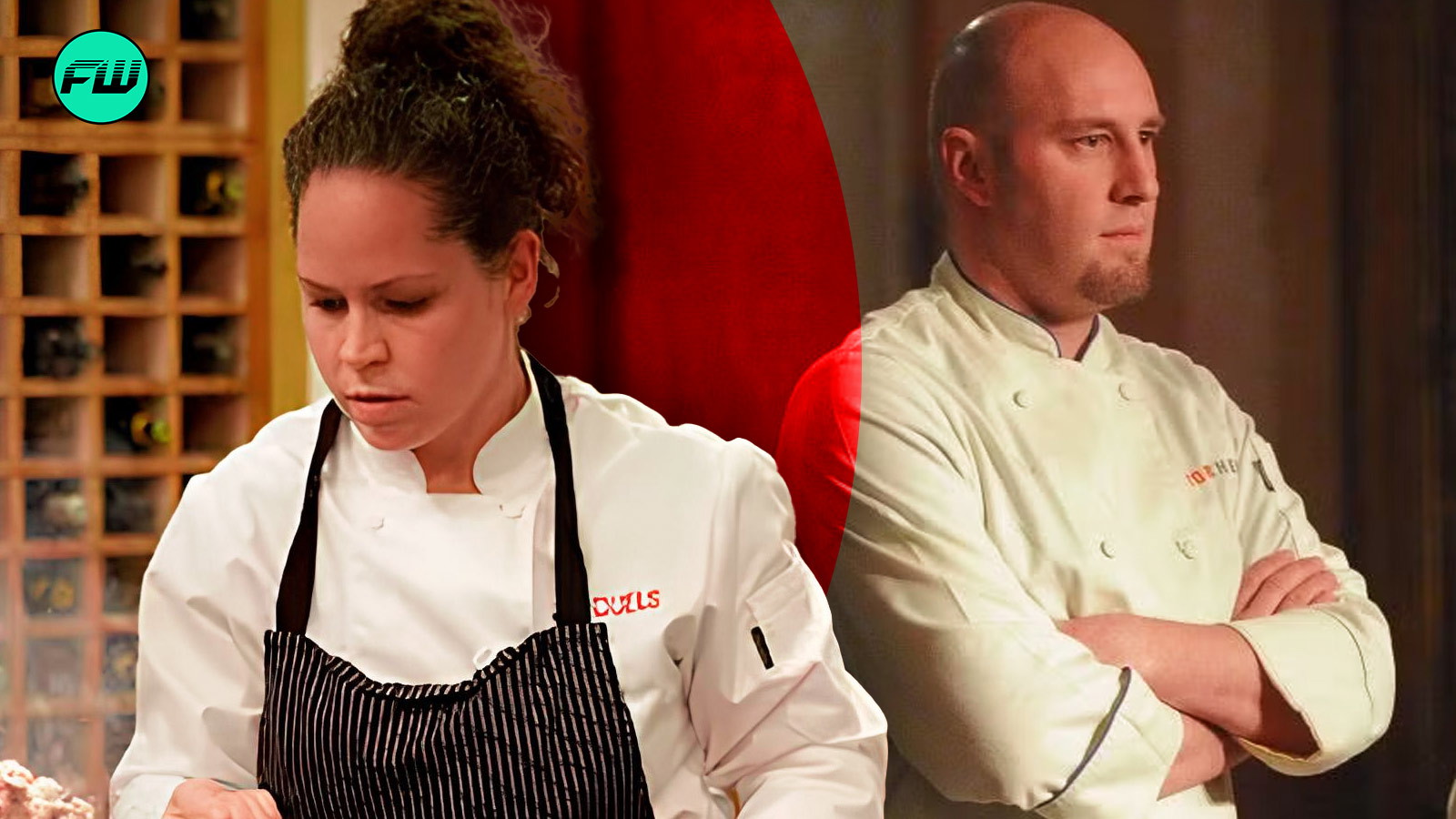
Ever wonder what happens after the confetti settles and the Top Chef crown gets passed on? With Tristen Epps-Long just claiming victory in season 22, we’ve got 21 incredible culinary success stories (and a few cautionary tales) to dive into.
From restaurant empires worth millions to devastating closures, from TV hosting gigs to cookbook deals, these chefs have taken wildly different paths since pocketing that life-changing prize money. Some are living their absolute best lives, while others have faced serious setbacks. However, all of them have fascinating stories to tell. Let’s catch up with every single Top Chef winner and see where the culinary world has taken them.
1. Harold Dieterle (Season 1, 2006) – The OG who’s still fighting the good fight

Harold Dieterle will always hold a special place in Top Chef history as the very first winner, but man, his post-show journey has been a wild ride of ups and downs. After beating Tiffani Faison in that inaugural San Francisco season, Harold seemed destined for greatness.
He used his prize money wisely, opening not one but three New York City restaurants: the Asian-influenced Perilla, the Thai-focused Kin Shop, and The Marrow, which celebrated his German-Italian heritage.
Here’s where things get tough, though. By 2015, all three restaurants had closed their doors. That’s got to sting, especially when you’re the guy who started this whole Top Chef winner legacy.
But Harold’s not the type to give up easily. He tried to make a comeback with Ten Hope in Williamsburg in 2019, working as a consulting chef, but that venture also shuttered in 2023. Most recently, he attempted another return with Il Totano in 2024, but unfortunately, that spot was also short-lived.
These days, Harold runs HD Hospitality, his events company, and honestly? The guy deserves major props for keeping at it despite the setbacks. The restaurant business is brutal, and even Top Chef winners aren’t immune to its challenges. Harold’s story reminds us that winning the show is just the beginning – the real work starts after the cameras stop rolling.
2. Ilan Hall (Season 2, 2007) – The fusion master who found his niche
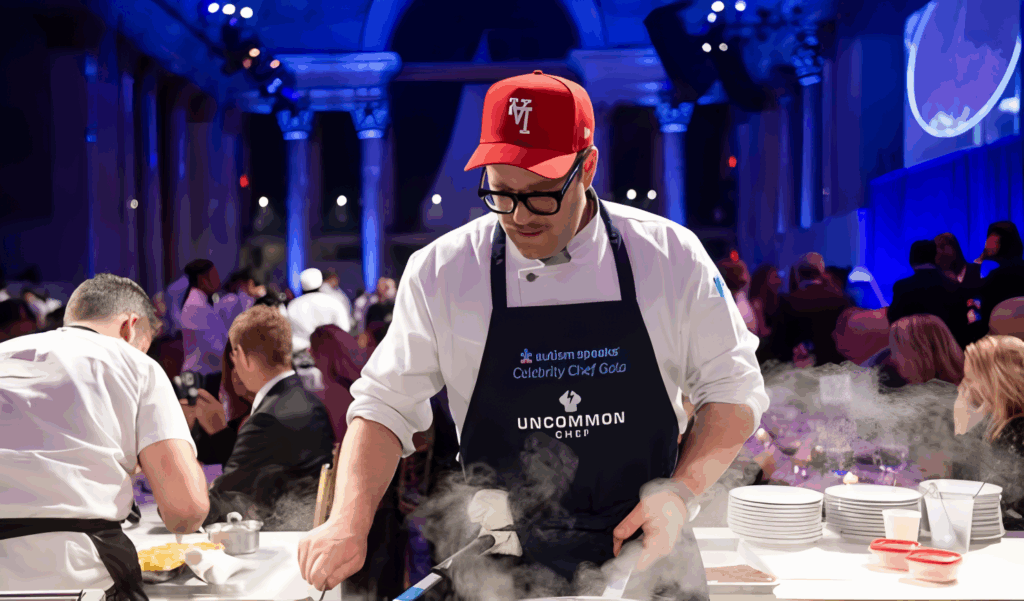
Now here’s a Top Chef winner who really figured out how to make it work in the long term. Ilan Hall took down Marcel Vigneron in that dramatic Los Angeles season, and unlike some of his fellow winners, he’s managed to build something that actually lasts. Sure, his first ventures – The Gorbals restaurants in both LA and NYC – eventually closed, but that’s when Ilan found his sweet spot.
Enter Ramen Hood, which opened in LA back in 2015 and is still going strong today. What makes this place special? It’s entirely plant-based, which was pretty revolutionary for ramen at the time. Ilan saw where food culture was heading and positioned himself perfectly. The restaurant has become a destination for both vegans and curious omnivores, proving that you don’t need meat to make incredible ramen.
Beyond the restaurant game, Ilan also crushed it in television, hosting Knife Fight on Esquire Network for four seasons. He’s made the rounds on Food Network shows, too, including Tournament of Champions, keeping his face in front of food-loving audiences.
At 41, he’s proven that sometimes the key to post-Top Chef success isn’t about opening as many restaurants as possible – it’s about finding your unique voice and sticking with it. Ramen Hood represents exactly that philosophy, and it’s clearly working for him.
3. Hung Huynh (Season 3, 2007) – The globe-trotting mastermind
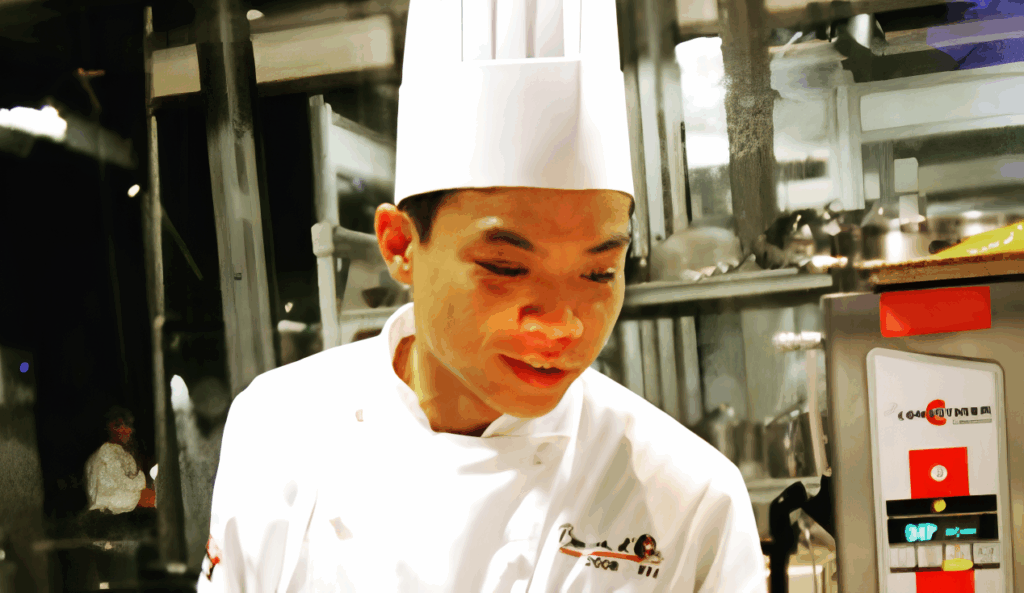
Hung Huynh took a completely different approach than most Top Chef winners, and honestly, it’s pretty brilliant. Instead of immediately opening his own restaurant and dealing with all the headaches that come with ownership, Hung decided to play the long game as a consultant and private chef. Smart move, considering how many restaurant ventures we’ve seen crash and burn.
After dominating in Miami and beating Dale Levitski, Hung became the face of the trendy Catch restaurant chain, which originated in New York City and has since expanded globally. But here’s what’s really cool about Hung’s approach – he’s focused on what he calls,
revolutionizing the way restaurants, farmers, cooks, and communities are integrated for the benefit of all.
That’s some next-level thinking right there.
At 46, Hung has basically become the chef’s chef, working behind the scenes to help other restaurants and culinary ventures succeed. He travels constantly, works with incredible ingredients from around the world, and gets to flex his culinary muscles without the stress of rent, staff management, and all the other nightmares that come with restaurant ownership.
Additionally, he has stayed true to his Vietnamese heritage while incorporating global influences – exactly the kind of cooking that made him stand out on Top Chef in the first place. Sometimes the smartest career move is knowing exactly what you don’t want to do, and Hung nailed that calculation.
4. Stephanie Izard (Season 4, 2008) – The queen who built a Chicago empire
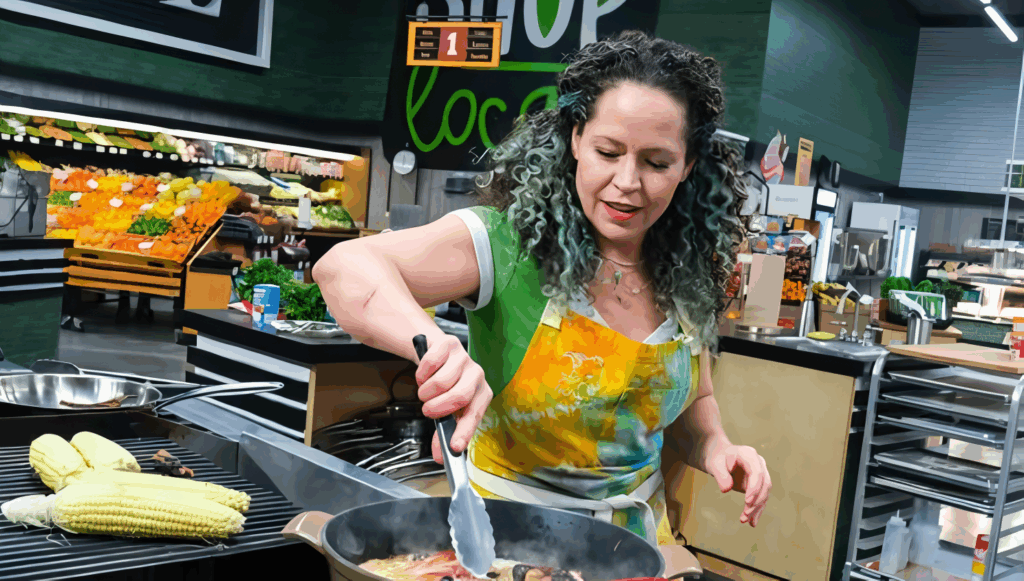
Stephanie Izard isn’t just a Top Chef winner – she’s basically restaurant royalty at this point, and her success story is the stuff of culinary dreams. As the first female winner of Top Chef, she had some serious pressure to prove that her victory wasn’t a fluke. Well, mission accomplished and then some.
After beating Richard Blais and Lisa Fernandes in Chicago, Stephanie did something smart: she stayed in Chicago and built her empire right there. Girl and the Goat became an instant sensation when it opened, and instead of getting comfortable, she kept expanding.
Little Goat Diner, Duck Duck Goat (Chinese-American), and Cabra (Peruvian-inspired) followed, each one showcasing a different side of her incredible range. And because one city wasn’t enough, she expanded Girl and the Goat to Los Angeles, too.
But wait, there’s more! Stephanie’s also a James Beard Award winner, has returned to Top Chef as a judge, and recently competed on Food Network’s Tournament of Champions. At 47, she’s proven that you can absolutely build a sustainable, multi-concept restaurant business if you’re smart about it.
Her restaurants have staying power because she’s not just following trends – she’s creating them. When people talk about Top Chef success stories, Stephanie Izard is always at the top of the list, and for good reason. She turned that initial prize money into something way bigger and never looked back.
5. Hosea Rosenberg (Season 5, 2009) – Cooking with heart and purpose

Hosea Rosenberg’s story hits different because it’s about so much more than just restaurant success. Sure, he won Top Chef by beating Carla Hall and Stefan Richter in New York, but what he’s done since then shows what it really means to use your platform for something bigger than yourself.
After his victory, Hosea settled in Colorado and opened two restaurants that perfectly reflect his roots: Blackbelly, which focuses on butchery and showcases his meat expertise, and Santo, where he celebrates modern New Mexico cuisine. Both restaurants have been successful, but what makes Hosea’s story so compelling is that he’s simultaneously running a personal mission that’s far more important than any restaurant.
His daughter Sophie was diagnosed with Multicentric Carpotarsal Osteolysis, an incredibly rare genetic disorder, when she was just a toddler. Since then, Hosea has dedicated a huge portion of his time and energy to finding a cure for this condition. We’re talking about a chef who’s using his Top Chef platform and success to literally try to save his daughter’s life and help other families dealing with the same rare disease.
That’s the kind of perspective that puts everything else into context. Yes, Hosea’s restaurants are doing well, and yes, he’s maintained his culinary reputation, but his real legacy is going to be what he accomplishes in the medical research world.
6. Michael Voltaggio (Season 6, 2009) – When sibling rivalry turns into business gold
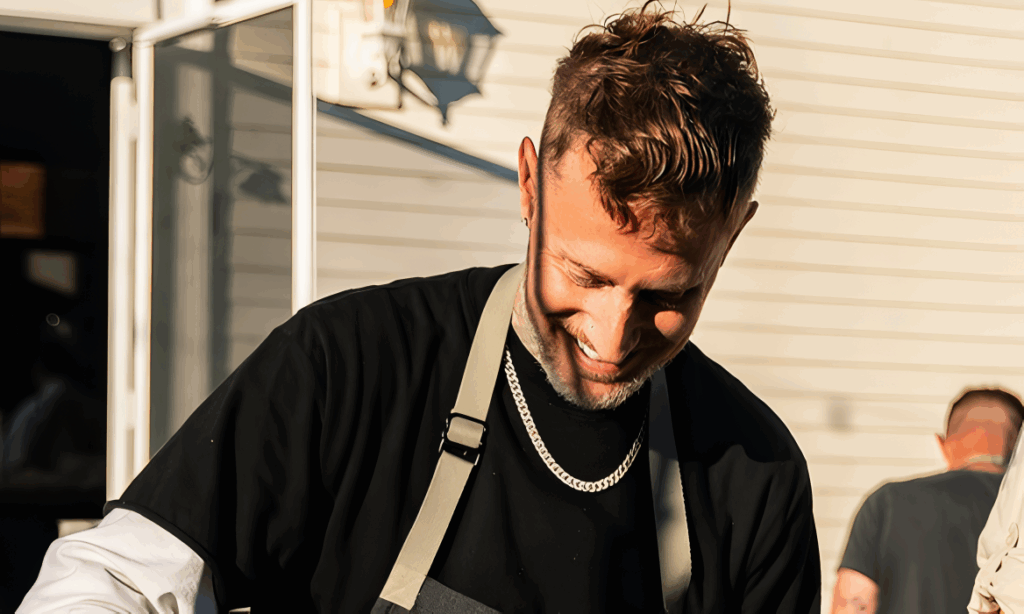
The Voltaggio brothers gave us one of the most dramatic Top Chef finales ever, with Michael beating his older brother Bryan in Las Vegas. What could have destroyed their relationship instead became the foundation for an incredibly successful business partnership. Talk about turning family drama into family fortune!
Michael’s immediately post-Top Chef ventures were a bit of a mixed bag – his molecular gastronomy restaurant Ink closed after several years, and he had to figure out his next move. But here’s where the story gets really good: instead of competing against Bryan forever, they decided to join forces.
The Voltaggio Brothers‘ empire now includes restaurants across multiple states, from their steakhouse at MGM National Harbor in Maryland to Vulcania at Mammoth Mountain in California, plus Retro at Mandalay Bay in Las Vegas.
Their latest venture, Wye Oak Tavern, opened in December 2024 inside a converted Maryland convent – because apparently, these guys aren’t afraid of any location challenge! Michael’s also stayed busy with TV appearances on Tournament of Champions and Bobby’s Triple Threat, keeping his face in front of food-loving audiences.
On the personal side, Michael welcomed his third child in June 2024, his first with wife Bria Vinaite. At 45, he’s proven that sometimes the best business partner is the person you’ve been competing with your whole life. The Voltaggio brothers took their Top Chef rivalry and turned it into a multi-restaurant empire that shows no signs of slowing down.
7. Kevin Sbraga (Season 7, 2010) – From fine dining to finding his lane
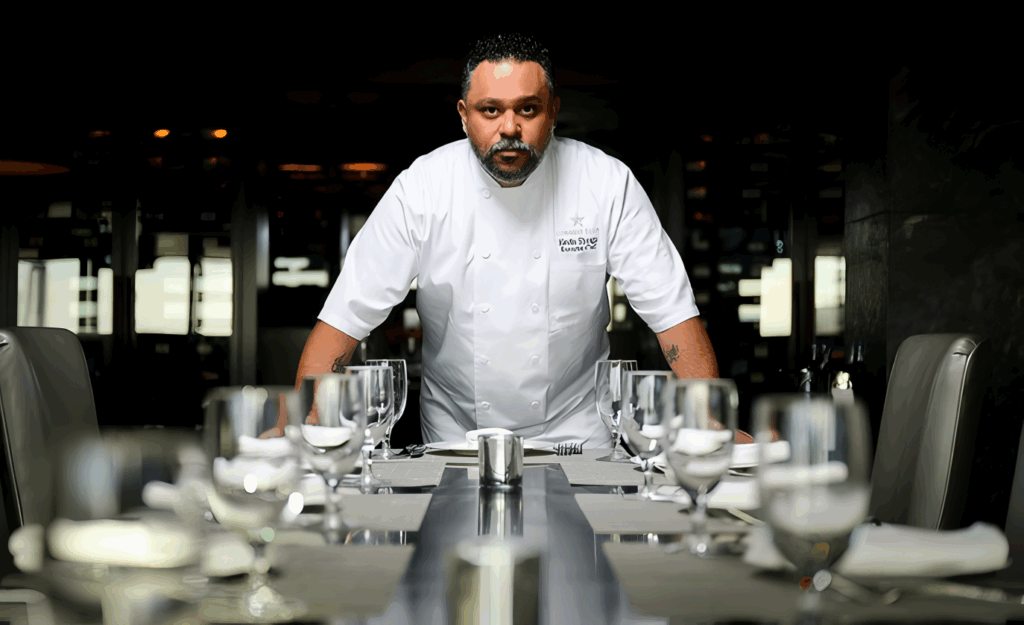
Kevin Sbraga’s Top Chef journey is a perfect example of how winning the show doesn’t guarantee instant, permanent success, but it can give you the tools to keep reinventing yourself until you find what works. After beating Ed Cotton and Angelo Sosa in Washington, D.C., Kevin initially followed the traditional winner’s playbook: open upscale restaurants and try to build a fine dining empire.
He opened restaurants in both Philadelphia and Jacksonville, attempting to capitalize on his Top Chef fame with sophisticated, chef-driven concepts. But here’s the thing about the restaurant business – it doesn’t care how many cooking competitions you’ve won. Market forces, changing consumer preferences, and just plain bad luck can take down even the most talented chefs.
When Kevin’s upscale ventures eventually wound down, he could have called it quits and moved into consulting or teaching. Instead, he made a smart pivot that shows real business acumen. In 2022, he announced his return to the kitchen with Sonny & Sons, a chicken concept in Maryland’s Le Fantome Food Hall. This move represents a growing trend among high-end chefs who are finding success in more casual, accessible formats.
Fast-casual doesn’t mean low-quality, and Kevin is applying all his fine dining skills to chicken in a way that’s probably more profitable and sustainable than his previous ventures. Sometimes the smartest thing a Top Chef winner can do is admit that their first plan didn’t work and be willing to try something completely different.
8. Richard Blais (Season 8, 2011) – The molecular gastronomist who became a TV star

Richard Blais has arguably had the most successful television career of any Top Chef winner, and that’s saying something considering how many of these folks have ended up on Food Network. After finally winning in the first All-Stars season (he was a runner-up in Season 4), Richard figured out pretty quickly that his real superpower wasn’t just cooking – it was explaining cooking to television audiences.
Sure, he’s opened restaurants over the years, including Trail Bliss in Atlanta, but Richard’s real empire is built on his media presence. The guy is everywhere: Guy’s Grocery Games, Tournament of Champions, various Food Network specials, and basically any cooking show that needs someone who can make molecular gastronomy seem approachable and fun instead of pretentious and scary.
What makes Richard so good on television is that he’s genuinely enthusiastic about food science and technique, and can explain complex concepts in ways that home cooks can understand and get excited about. He’s like the cool chemistry teacher who makes everyone want to experiment in the kitchen. His molecular gastronomy background, which could have pigeonhole him as just a weird science guy, instead became his ticket to television stardom.
At this point, Richard’s probably made way more money from his TV appearances and endorsements than he ever could have from restaurants alone. He figured out how to monetize his Top Chef victory in a way that doesn’t require dealing with the day-to-day stress of restaurant operations, and honestly, that’s pretty genius.
9. Paul Qui (Season 9, 2012) – When talent meets controversy
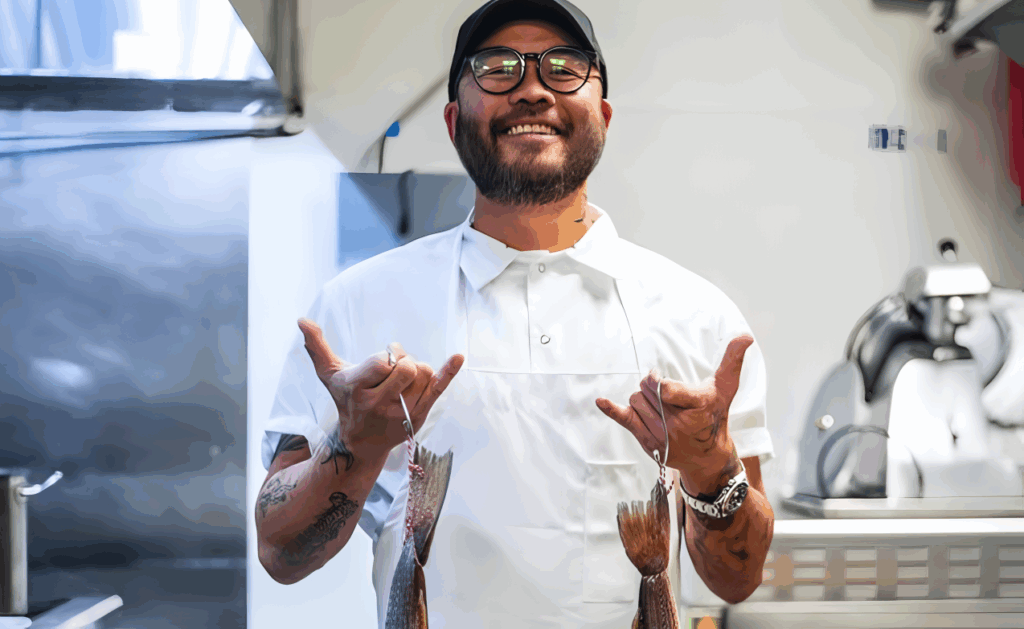
Paul Qui’s story is probably the most complicated and difficult of any Top Chef winner, because it involves genuine culinary brilliance overshadowed by serious personal issues.
When he dominated Season 9 in Texas, winning nine out of 17 challenges, it was clear that this guy was operating on a different level from most chefs. His competition included Sarah Grueneberg (who later won a James Beard Award), Edward Lee, and Nyesha Arrington – not exactly weak opponents.
Initially, Paul’s post-Top Chef career looked like it was going to be incredible. His restaurant Qui in Austin earned serious critical acclaim and seemed to establish him as one of the most innovative chefs in America. But then everything went sideways in 2016 when he was involved in a domestic violence incident that completely derailed his career trajectory.
The fallout was swift and severe. Paul had to close Qui and eventually reopened it as Kuneho, but the damage to his reputation was significant. He tried to rebuild with Aqui in Houston, but that also closed. His most recent attempt was Golfstrømmen, a sustainable seafood concept in Houston that opened in 2021 but closed in February 2024.
Paul’s story serves as a reminder that talent alone isn’t enough – personal conduct matters enormously in an industry that’s increasingly focused on accountability and workplace culture.
His case illustrates how quickly a Top Chef winner can fall from being at the pinnacle of the culinary world to struggling to maintain any foothold in the industry. It’s a cautionary tale about how actions outside the kitchen can completely destroy what happens inside it.
10. Kristen Kish (Season 10, 2013) – From eliminated contestant to the show’s new face

Kristen Kish has pulled off maybe the most impressive career transformation of any Top Chef winner. Not only did she become the first chef to get eliminated, fight back through Last Chance Kitchen, and then win the whole thing, but she’s now literally the face of the franchise as the new host. Talk about a glow-up!
After her Seattle victory over Brooke Williamson, Kristen could have easily just opened a restaurant and called it a day. Instead, she’s built a media empire that spans multiple networks and shows. She has hosted Netflix‘s Iron Chef: Quest for an Iron Legend, starred in National Geographic‘s Restaurants at the End of the World, and now she has taken over hosting duties from Padma Lakshmi on Top Chef itself.
But Kristen hasn’t abandoned the restaurant world entirely – she runs Arlo Grey in Austin, which showcases her Korean-American heritage alongside global influences. What’s smart about her approach is that she’s diversified her career in a way that doesn’t put all her eggs in the restaurant basket. Television hosting, especially for food shows, can be incredibly lucrative and a lot less stressful than running multiple restaurants.
At 40, Kristen represents the new generation of celebrity chefs who understand that building a personal brand across multiple platforms is often more valuable than just being really good at cooking.
She’s turned her Top Chef victory into something much bigger than anyone could have predicted when she was getting eliminated in week 11. The fact that she’s now literally hosting the show that made her famous? That’s the kind of career move that deserves a standing ovation.
11. Nicholas Elmi (Season 11, 2014) – Building steady success in the city of brotherly love

Nicholas Elmi might not get as much national attention as some other Top Chef winners, but don’t sleep on what he’s accomplished in Philadelphia. After beating fan favorite Nina Compton in New Orleans with his French-influenced cooking, Nicholas made a smart decision: instead of trying to conquer multiple cities, he focused on becoming a Philadelphia institution.
His restaurant portfolio includes Laurel, The Landing Kitchen, and Lark – each one showcasing different aspects of his culinary range while staying true to his French training and New England roots. What’s impressive about Nicholas’s approach is that he’s built something sustainable without constantly chasing the next big thing or trying to become a national celebrity chef.
He’s also released a cookbook that celebrates Philadelphia’s food culture, showing that he understands his role in the city’s culinary landscape isn’t just about his own restaurants – it’s about contributing to the overall food scene. This kind of community-minded approach often leads to longer-term success than the celebrity chef trying to take over the world strategy.
Nicholas represents the Top Chef winner who prioritizes steady growth over flashy expansion. His restaurants have staying power because they’re rooted in a specific place and culture, rather than trying to be everything to everyone. Sometimes, the smartest business move is to pick your territory and become absolutely excellent within those boundaries.
The fact that he’s maintained multiple successful restaurants in one city for nearly a decade shows that he truly understands the fundamentals of restaurant operation, which is honestly more impressive than opening 20 locations that close within two years.
12. Mei Lin (Season 12, 2015) – From Michael Voltaggio’s kitchen to LA royalty

Mei Lin’s Top Chef victory has one of the coolest backstories because she was literally working at Michael Voltaggio’s restaurant, Ink, when she decided to compete on the show. Imagine being an employee of a former Top Chef winner and then going on to win the title yourself – that’s some serious culinary confidence right there!
After dominating the Boston season and beating Gregory Gourdet in the finale, Mei returned to Los Angeles and proved that she was ready to step out of Voltaggio’s shadow and create her own culinary identity.
Her restaurants, Nightshade and Daybird, have become essential parts of LA’s dining scene, each showcasing different aspects of her Chinese-American background while incorporating the global influences that make LA’s food culture so exciting.
What’s particularly impressive about Mei’s success is how she’s managed to honor her family’s heritage – she grew up working in her parents’ Chinese restaurant in Michigan – while also creating something entirely new and personal. Nightshade, in particular, has become known for its innovative approach to Chinese-American cuisine that goes way beyond typical expectations.
Mei represents the Top Chef winner who used their platform to elevate underrepresented cuisines and perspectives. Instead of just opening chef-driven American cuisine restaurants, she’s specifically focused on advancing Chinese-American food culture in a way that’s both authentic and innovative.
Her success in the incredibly competitive Los Angeles market proves that when you have a clear culinary point of view and execute it flawlessly, location doesn’t matter – good food finds its audience.
13. Jeremy Ford (Season 13, 2016) – Florida’s multimedia culinary star

Jeremy Ford has built one of the most well-rounded post-Top Chef careers, successfully balancing restaurant ownership with television appearances in a way that’s made him a legitimate multimedia star. After winning the California season by beating Amar Santana, Jeremy returned to his home base of Miami and started building what would become a mini restaurant empire.
His restaurants – Stubborn Seed, The Butcher’s Club, and Beauty & The Butcher (named after his daughter) – have each found their own audience in Miami’s competitive dining scene. What’s smart about Jeremy’s approach is that each concept caters to a different market and price point, ranging from upscale dining to more casual experiences. This diversification helps protect against market fluctuations and changing consumer preferences.
But Jeremy’s real genius move was landing a television hosting gig with TruTV’s Fast Foodies, alongside fellow Top Chef winner Kristen Kish and alum Justin Sutherland. The show’s format – recreating fast food favorites with high-end techniques – is perfect for Jeremy’s personality and skill set. He’s funny, technically skilled, and doesn’t take himself too seriously, which translates perfectly to television.
At 39, Jeremy represents the Top Chef winner who’s figured out how to be successful in multiple arenas without spreading himself too thin. His restaurants provide steady income and keep him connected to the Miami food scene, while his television work gives him national exposure and additional revenue streams.
14. Brooke Williamson (Season 14, 2017) – The ultimate comeback story

Brooke Williamson’s Top Chef victory is one of the most satisfying in the show’s history because of how she got there. After being eliminated on episode 11 of the Charleston season, she had to fight her way back through Last Chance Kitchen and then beat her friend Shirley Chung in the finale. That’s the kind of resilience that separates good chefs from great ones.
What makes Brooke’s post-Top Chef career so impressive is how she has managed to balance restaurant ownership with a remarkably busy television schedule. Her Los Angeles restaurant, Playa Provisions, has remained successful while she has appeared on nearly every food competition show that exists, including Top Chef Duels, Guy’s Grocery Games, and numerous others.
Brooke’s television appearances are smart business moves because they keep her name in front of national audiences while also providing additional income that doesn’t depend on restaurant sales. At 45, she’s proven that you can absolutely maintain a successful restaurant while also building a television career – you just have to be incredibly organized and willing to work harder than most people can imagine.
Her approach to television is particularly savvy because she comes across as genuinely competitive and skilled rather than just trying to be entertaining. Viewers can tell that she’s there to win, not just to promote her restaurant, which makes her appearances more authentic and engaging.
The fact that she has managed to keep Playa Provisions running successfully while maintaining such a busy TV schedule demonstrates serious business acumen and time management skills.
15. Joe Flamm (Season 15, 2018) – Chicago’s Croatian-Italian success story
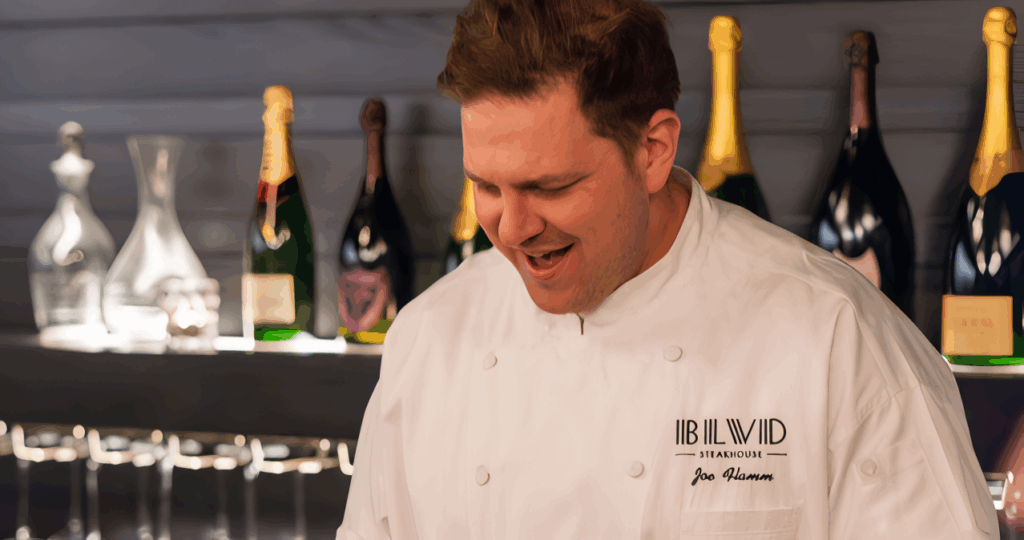
Joe Flamm’s Top Chef victory and subsequent career moves represent everything that’s great about staying true to your roots while also being smart about business opportunities.
After being eliminated and then fighting back through Last Chance Kitchen to win the Colorado season, Joe could have opened a restaurant anywhere in the country. Instead, he returned to Chicago and opened Rose Mary, a restaurant that tells his personal story through food.
Rose Mary brilliantly combines his grandmothers’ Croatian and Italian heritage in a way that feels both authentic and innovative. The restaurant has become a Chicago institution, proving that diners are hungry for personal, story-driven cuisine that goes beyond generic chef-driven American concepts. However, Joe didn’t stop there – he also took over Chicago’s BLVD Steakhouse and recently opened Il Carciofo, which specializes in Roman cuisine.
What’s particularly impressive about Joe’s career is how he’s managed to expand his restaurant portfolio while also maintaining his television presence. He’s appeared as a judge on Top Chef and continues to be involved with the franchise that made him famous.
This kind of ongoing relationship with the show that launched his career is smart business – it keeps him visible to national audiences while also providing additional income.
Joe’s personal life has also flourished since his Top Chef victory. He and his wife, Hillary, welcomed their son, Luka William, in 2018, showing that it’s possible to build both a successful restaurant career and a family. At this point, Joe represents the ideal Top Chef success story: authentic cuisine, sustainable business growth, ongoing television presence, and personal happiness.
16. Kelsey Barnard Clark (Season 16, 2019) – Bringing Southern cuisine to the national stage

Kelsey Barnard Clark’s Top Chef victory was significant because she was one of the first Southern chefs to really shine on the show, beating Sara Bradley in Kentucky with cooking that honored Southern traditions while also pushing them forward. Her post-Top Chef career has been dedicated to elevating Southern cuisine and garnering the recognition it deserves on a national level.
Since winning, Kelsey has released two cookbooks that showcase different aspects of Southern cooking: Southern Grit in 2021 and Southern Get-Togethers in 2024. These aren’t just recipe collections – they’re cultural documents that explain the history and significance of Southern food traditions while also showing how they can evolve for modern kitchens.
The biggest validation of Kelsey’s impact came in January 2024 when she was nominated for a James Beard Award. This is huge because the James Beard Awards are basically the Oscars of the food world, and Southern cuisine has historically been underrepresented in these national honors. Her nomination represents not just personal success, but progress for an entire regional cuisine that deserves more respect.
What makes Kelsey’s approach so effective is that she’s not trying to completely reinvent Southern cooking – she’s showing how delicious and sophisticated it already is when executed properly.
Her cookbooks and public appearances focus on technique, history, and storytelling rather than just trying to shock people with weird fusion combinations. This authentic approach has clearly resonated with both critics and home cooks, positioning her as a legitimate authority on Southern cuisine rather than just another TV chef.
17. Melissa King (Season 17, 2020) – Redefining fusion cuisine for a new generation

Melissa King’s Top Chef victory came at an unusual time – right in the midst of the pandemic, when restaurants were struggling and the food world was turned upside down. However, instead of letting those circumstances derail her momentum, she has used her platform to build something completely different and arguably more sustainable than traditional restaurant ownership.
Her approach to fusion cuisine is what initially caught everyone’s attention. As she said during her winning season,
The term fusion has a bad wrap. I really want to change that.
Her finale menu in Tuscany perfectly demonstrated this philosophy, bringing together Chinese and Italian influences in a way that felt natural and delicious rather than gimmicky or forced.
Since winning, Melissa has focused on building virtual cooking classes, which turned out to be perfectly timed for the pandemic era when people were stuck at home and wanting to learn new skills. She has also expanded into television, serving as a rotating judge on season 18 of Top Chef and hosting National Geographic’s Tasting Wild, which explores indigenous ingredients and cooking techniques.
Her upcoming cookbook Cook Like a King, dropping in fall 2025, represents the culmination of her post-Top Chef journey so far. The timing suggests she has spent the years since her victory developing her voice and philosophy rather than rushing into projects.
Melissa’s career trajectory shows that sometimes the smartest move after winning Top Chef is to take time to figure out exactly what kind of impact you want to have on the food world.
18. Gabe Erales (Season 18, 2021) – Triumph overshadowed by serious controversy
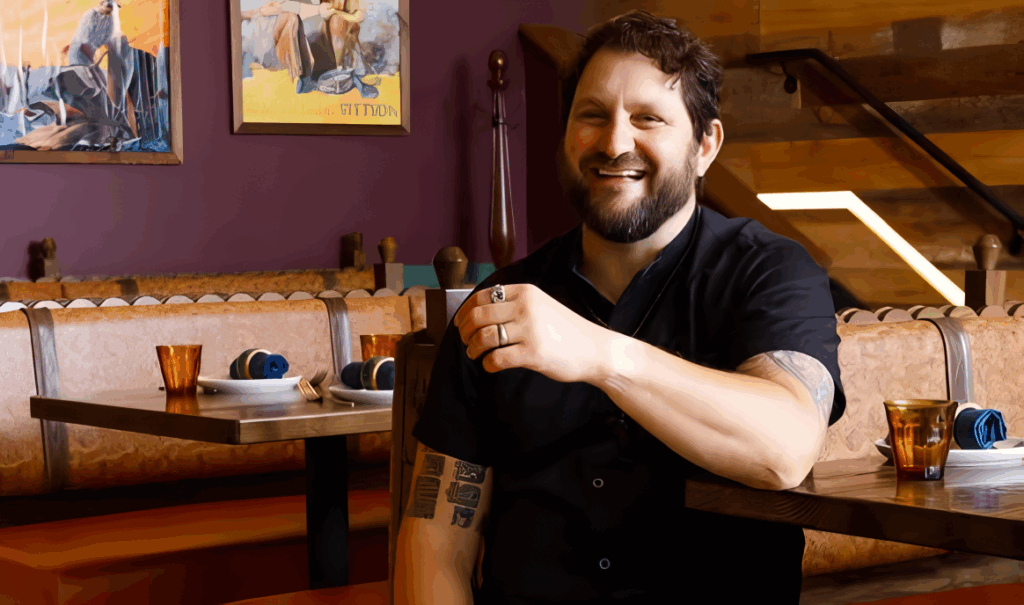
Gabe Erales’ story is one of the most difficult to discuss because it involves a genuine culinary achievement that is overshadowed by serious allegations of personal misconduct. His victory in the Portland season was historic – he became the first Mexican chef to win Top Chef, beating strong competitors like Shota Nakajima and Dawn Burrell with his exceptional sauce work and innovative approach to Mexican cuisine.
Initially, everything looked perfect for Gabe’s post-Top Chef career. He had trained at Noma, one of the world’s most prestigious restaurants, and was working at Austin’s Comedor when he won. His victory seemed like it would launch a career focused on elevating Mexican cuisine and representing his heritage on a national stage.
But then everything fell apart. Shortly after his season aired, he was fired from Comedor for what his boss described as
repeated violations of the company’s ethics policy as it relates to harassment of women.
“I am deeply and sincerely sorry for the impact that my poor decisions had on those involved,” Erales continued. “My personal growth will be a perpetual apology in seeking forgiveness.” https://t.co/vCKK9Fd4TH
— Variety (@Variety) July 23, 2021
The allegations were serious enough that Top Chef judge and host Padma Lakshmi publicly called for Bravo to investigate. Gabe issued an apology on Instagram, but the damage to his reputation was severe.
In 2023, he attempted a comeback by opening Ometeo, a Mexican restaurant in Virginia. Whether this represents genuine redemption or just geographic distance from his problems remains to be seen.
Gabe’s story serves as a stark reminder that talent and achievement mean nothing if they’re not accompanied by basic respect for other people. His case illustrates how quickly a Top Chef victory can be overshadowed by personal conduct, and why the industry’s growing emphasis on workplace culture and accountability is so crucial.
19 & 20. Buddha Lo (Seasons 19 & 20, 2022-2023) – The unprecedented back-to-back champion
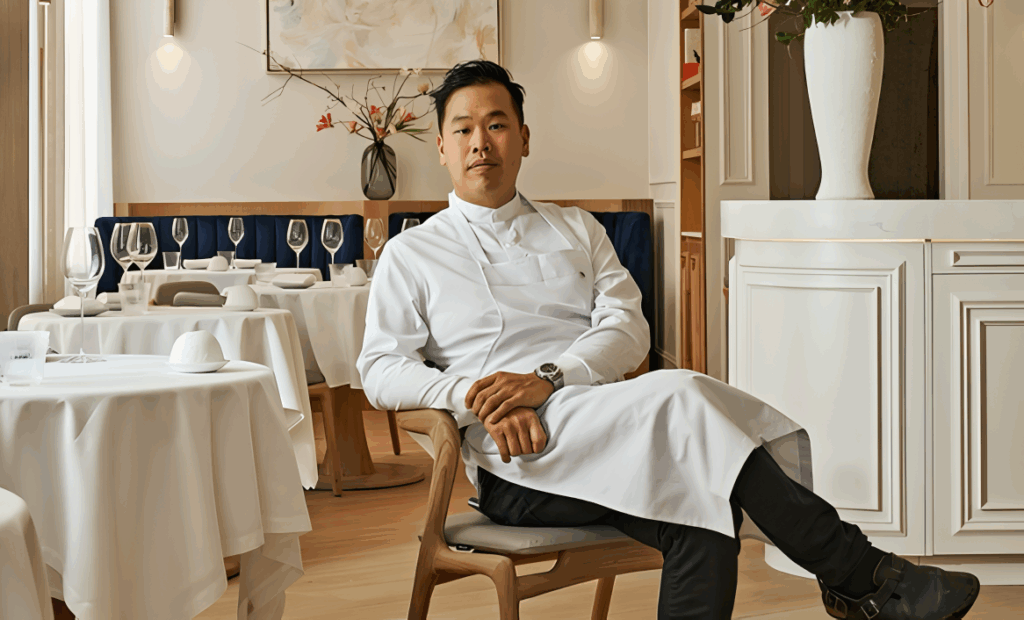
Buddha Lo accomplished something that no other chef in Top Chef history has managed: winning consecutive seasons. First, he dominated Season 19 in Houston with cooking that was literally out of this world (that NASA-inspired dessert was incredible), and then he came back to win Season 20 of All-Stars in London. This is basically like winning the World Series two years in a row – it just doesn’t happen very often.
What makes Buddha’s achievements even more impressive is that Season 20 was an all-stars edition, meaning he was competing against other Top Chef winners and fan favorites who all had something to prove. Winning once could be considered luck or a good day; winning twice, especially against that level of competition, proves that Buddha is operating on a different level from most chefs.
His cooking style, which seamlessly combines his Australian background with global influences and meticulous technical skill, has clearly resonated with judges and audiences. The fact that he was invited back for Season 20 so soon after winning Season 19 demonstrates the show’s producers’ high confidence in his abilities and television presence.
Buddha’s back-to-back victories have positioned him as one of the most skilled competitors in Top Chef history, which should translate into incredible opportunities going forward.
Whether he chooses to focus on restaurants, television, or something entirely different, he has the kind of credibility that opens doors everywhere. His story proves that sometimes the best strategy is simply being so good at what you do that people can’t ignore you.
21. Danny Garcia (Season 21, 2024) – Riding the waves to victory and immediate success
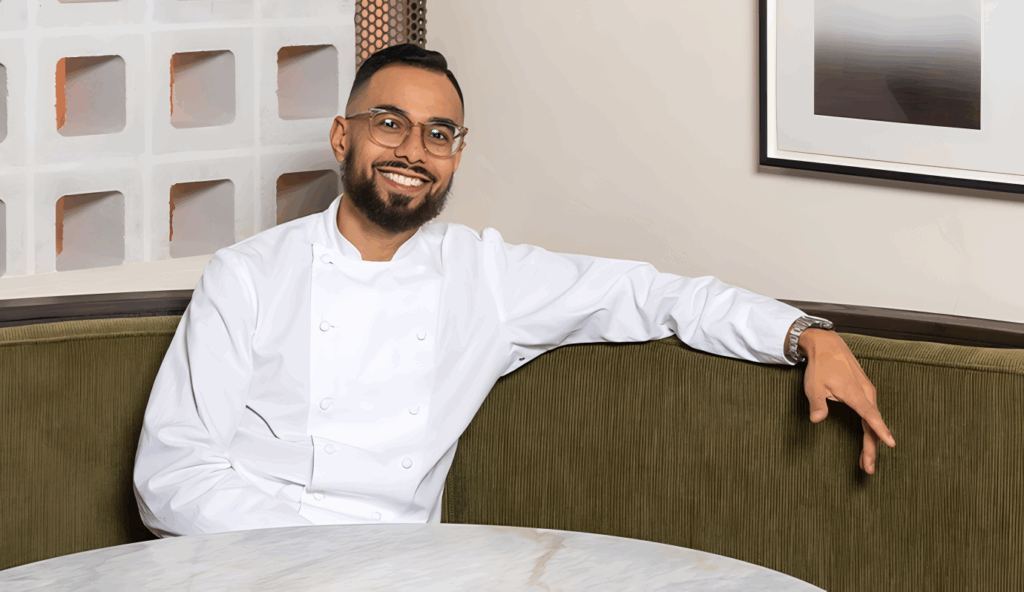
Danny Garcia’s Top Chef victory was dramatic in every possible way – the final two episodes were set on a Caribbean cruise ship, which had to be one of the most challenging cooking environments in the show’s history. But Danny managed to create exceptional multi-course meals while literally rocking back and forth on the ocean, beating fellow finalists Dan Jacobs and Savannah Miller to claim the $250,000 prize.
What’s particularly impressive about Danny’s post-Top Chef trajectory is how quickly he capitalized on his victory. By October 2024, just a few months after his season aired, he had already opened Time and Tide, his seafood restaurant in New York City. This kind of rapid turnaround suggests serious business planning and probably some pre-show preparation, which shows real entrepreneurial thinking.
The restaurant’s focus on seafood makes perfect sense, given Danny’s background and the dramatic ocean-based finale in which he won his title. It’s smart branding that directly connects his Top Chef victory to his restaurant concept, helping diners understand exactly what they’re getting when they visit.
As one of the most recent winners, Danny represents the newest generation of Top Chef success stories. His quick move into restaurant ownership shows confidence in his abilities and vision, while his choice to open in New York City demonstrates serious ambition.
22. Tristen Epps-Long (Season 22, 2025) – The newest member of an elite club

Tristen Epps-Long just claimed the Top Chef crown in the season 22 finale, beating runners-up Shuai Wang and Bailey Sullivan after a competition that took him across Canada’s diverse culinary landscape. As the newest winner, Tristen is about to embark on the same journey that all these other chefs have taken – figuring out how to turn Top Chef fame into lasting career success.
This season offered the largest grand prize package in Top Chef history, including the standard $250,000, but also $125,000 in Delta Air Lines flight credits, Diamond Medallion status, a feature in Food & Wine magazine, an appearance at the Food & Wine Classic in Aspen, their own dinner at the James Beard House, and the opportunity to present at the James Beard Awards in Chicago.
That’s an incredible foundation to build on, and it will be fascinating to see which path Tristen chooses. Will he follow the restaurant ownership route like so many others? Focus on television and media like Kristen Kish and Richard Blais? Or come up with something completely new that we haven’t seen from previous winners?
What we do know is that Tristen is joining an incredibly elite group of chefs who have proven they can perform under the most intense pressure imaginable. The Top Chef kitchen doesn’t just test cooking skills – it tests creativity, leadership, time management, and mental toughness. Anyone who emerges victorious from that environment has the tools to succeed in whatever they choose to do next.
The bigger picture: what Top Chef victory really means

Looking at all 21 winners, a few patterns become clear. The most successful ones don’t just rely on their Top Chef fame – they use it as a launching pad for bigger things. Whether that’s building restaurant empires, like Stephanie Izard, becoming television personalities, like Kristen Kish and Richard Blais, or focusing on community impact, like Hosea Rosenberg, the winners who thrive long-term are the ones who understand that the show is just the beginning.
The $250,000 prize money is obviously helpful, but the real value of winning Top Chef is the platform it provides. Suddenly, you have gained national recognition, credibility with investors and partners, and access to opportunities that would take years to develop otherwise. How you use that platform determines whether you’ll be remembered as a flash in the pan or a lasting success story.
Some winners have faced serious setbacks – restaurant closures, personal controversies, and changing market conditions – but the ones who have managed to rebuild and reinvent themselves show the resilience that probably helped them win Top Chef in the first place. The show doesn’t just crown the best cook; it crowns someone who can handle pressure, adapt to challenges, and keep performing when everything is on the line.
As Tristen Epps-Long begins his post-Top Chef journey, he’s joining a legacy of chefs who’ve used their victory to change not just their own lives, but the entire food world. Whether he becomes the next Stephanie Izard or charts a completely new course, one thing is certain: winning Top Chef is just the first course in what should be an incredible culinary career.
You can watch all seasons of Top Chef now on BravoTV, FuboTV, and Apple TV+.
This post belongs to FandomWire and first appeared on FandomWire
